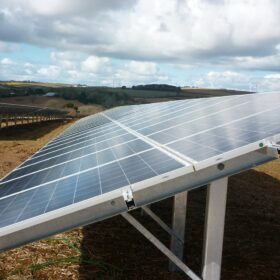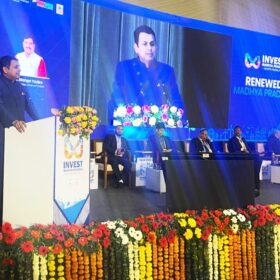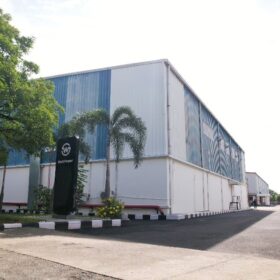Robotic workers unveiled at Intersolar
RoboForce says its AI-enabled robots can install modules “faster and cheaper” than human workers.
Gensol Engineering to sell US arm Scorpius Trackers for INR 350 crore
Gensol Engineering has signed a non-binding term sheet to sell its US arm Scorpius Trackers to a major renewable energy solutions provider in the US.
India needs $300 billion to meet 2032 renewable energy target
Achieving the National Electricity Plan (NEP-14) targets would require annual financing for renewable energy, storage and transmission to grow by 20% each year, reaching $68 billion by 2032 from $13.3 billion in FY 2024, says a new report from Ember.
India added 25 GW of solar in 2024, says Mercom
Large-scale solar installations grew nearly 235% year-on-year (YoY) to achieve record capacity additions.
Tata Power to develop 5 GW of renewable energy, storage projects in Assam
Tata Power will build 5 GW of renewable energy (solar, wind, and hydro) and storage plants with an investment of INR 30,000 crore over the next five years.
Inverted to build 5 GWh fully automated battery factory in Rajasthan
Inverted has unveiled plans to establish a fully automated battery plant in Ghilot, Rajasthan, with an annual production capacity of 5 GWh. The 4-acre facility will produce battery solutions for four-wheelers, light commercial vehicles and battery energy storage systems.
NTPC commits over INR 2 lakh crore investment in Madhya Pradesh
NTPC and its arm NTPC Green Energy Ltd (NGEL) have signed agreements with Madhya Pradesh government to set up renewable projects based on solar, wind, pump hydro and other carbon neutral energy sources in the state.
Solar sector growth trends and emerging opportunities in 2025
The convergence of policy support, technological innovation, and market demand is set to propel the solar sector into a new era of growth.
Avaada Group commits INR 50,000 crore to renewables, storage projects in Madhya Pradesh
Avaada Group said it will develop 6 GW of solar energy, 700 MW of wind energy, 2.1 GW of battery energy storage systems (BESS), and 2 GW of pumped storage projects in Madhya Pradesh. Additionally, it will establish green energy equipment manufacturing facilities in the state.
WattPower hits 15 GW string inverter sales milestone
WattPower has achieved the feat of producing and supplying around 15 GW of solar string inverters in just 17 months.














